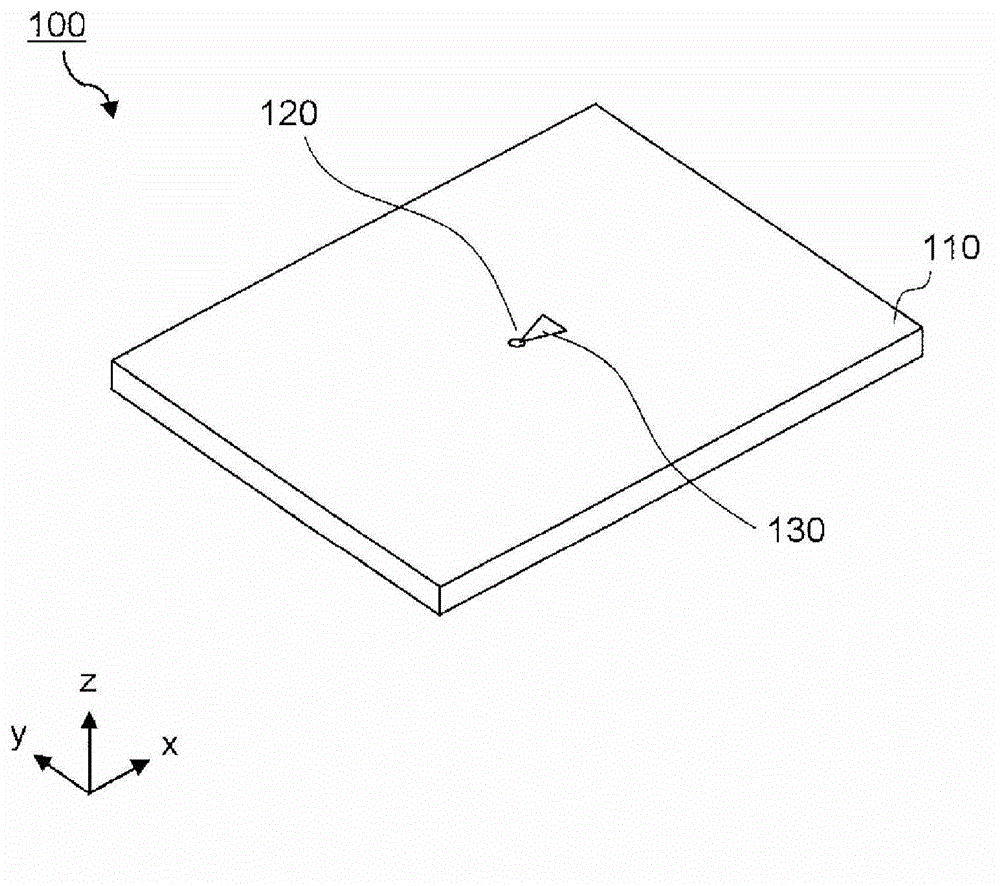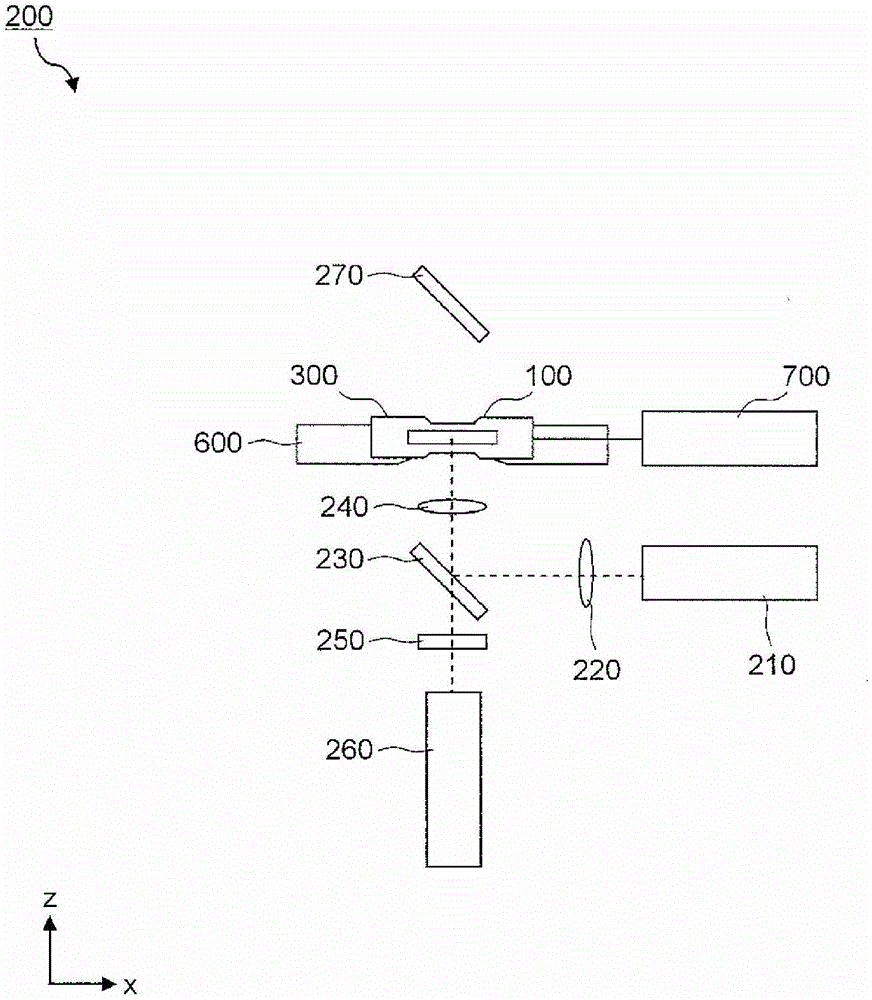Biopolymer optical analysis device and method
一种生物聚合物、解析装置的技术,应用在特性进行解析的装置领域,能够解决操作复杂等问题,达到识别能力高的效果
- Summary
- Abstract
- Description
- Claims
- Application Information
AI Technical Summary
Problems solved by technology
Method used
Image
Examples
Embodiment 1
[0098] [Example 1] Characteristic Analysis of Nanopore Chip and Biopolymer Using the Nanopore Chip
[0099] use figure 1 Now, an example of the configuration of the nanopore chip for biopolymer property analysis of the present invention will be described. figure 1 It is a schematic diagram of the nanopore chip 100 for analyzing the properties of the biopolymer in this example. As shown in the figure, the nanopore chip 100 is composed of a substrate 110, a nanopore 120, a conductive thin film 130, and the like. As shown in the figure, the plane parallel to the widest surface of the substrate 110 (hereinafter referred to as the substrate surface) is defined as the xy plane, the direction connecting the conductive thin film 130 and the nanopore 120 is defined as the x axis, and the direction perpendicular to the xy plane is defined as The direction is defined as the z-axis. The nanopore 120 is formed approximately perpendicular to the substrate surface, in other words, the cen...
Embodiment 2
[0137] [Example 2] Structure of multi-nanopore analysis device
[0138] use Figure 11 An example of the configuration of the multi-nanopore chip for biopolymer property analysis of the present invention will be described. Figure 11 It is a schematic diagram of the multi-nanopore chip 1100 for analyzing the properties of the biopolymer in Example 2. As shown in the figure, the multi-nanohole chip 1100 is composed of a substrate 1110, nanopores 1120, 1121, conductive thin films 1130a, 1130b, 1131a, 1131b, and the like. As shown in the figure, the multi-nanohole chip 1100 of this embodiment has the unit structure of the above-mentioned modified example in which a plurality of nanopores and conductive thin films facing each other are formed on one substrate 1110, that is, Figure 10 The unit structure exemplified in .
[0139] Next, use Figure 12 An example of the configuration of the biopolymer property analysis device in this example will be described. Figure 12 It is a...
Embodiment 3
[0148] [Example 3] Nanopore chip of sandwich structure
[0149] use Figure 13 An example of the configuration of the nanopore chip for analyzing the properties of the biopolymer according to the present invention will be described. Figure 13 It is a schematic enlarged view of the xz cross-section including the central axis 121 of the nanopore 120 of the nanopore chip 100 b of the third embodiment. The substrate surface of the substrate 110 above the z-axis has a thin film portion 111a, has conductive thin films 130a and 130b thereon, and further has a thin film portion 111b thereon. Other modification examples with embodiment 1 ( Figure 10 )same.
[0150] The fabrication method of the nanopore chip 100b of the present embodiment 3 is similar to that of the embodiment 1 (modified example), but after forming the patterns of the conductive thin films 130a, 130b by EB etching, a SiO film with a film thickness of about 20nm is formed by sputtering. 2The formed thin film port...
PUM
 Login to View More
Login to View More Abstract
Description
Claims
Application Information
 Login to View More
Login to View More - R&D
- Intellectual Property
- Life Sciences
- Materials
- Tech Scout
- Unparalleled Data Quality
- Higher Quality Content
- 60% Fewer Hallucinations
Browse by: Latest US Patents, China's latest patents, Technical Efficacy Thesaurus, Application Domain, Technology Topic, Popular Technical Reports.
© 2025 PatSnap. All rights reserved.Legal|Privacy policy|Modern Slavery Act Transparency Statement|Sitemap|About US| Contact US: help@patsnap.com



